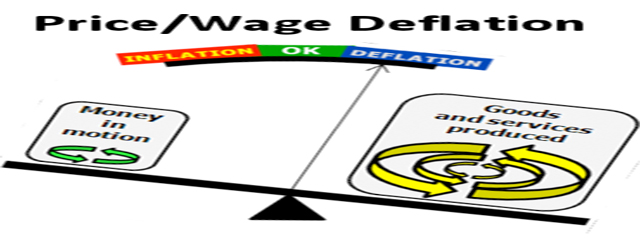In contrast, the ECB has promptly addressed the looming threat by lowering its discount rate. It hardly hesitated to act following a lower than expected EU-wide inflation performance, far below the close to 2% medium-term goal. For all the fuming rebukes its move sparked off in Germany, most observers agree that plunging prices reflect a tottering demand and a wobbly recovery. The GDP deflator even portrays a more dismal outlook.
Does deflation stand as a potential danger? Not yet, should we stick to its conventional denotation of unremitting price falls leading to a self-propelled process of increasingly frail expectations. But flatly rejecting that risk might prove an ill-judged bet. Most clues point to a deflationary bias. The export-led attempts to overcome recessionary bouts induce a downwards price trend in tradeable goods. The Euro escalation against major currencies adds extra pressure. Real wages decline, while helping to enhance competitiveness, does little to alleviate the consumption slump. The ongoing output gap will continue to weigh for longer than expected on global demand. Emerging economies’ expansion loses steam while commodities are falling across the board.
So far, a full-fledged deflation doesn’t seem stemming as the most likely outcome. Yet, living in a low-motion price environment amounts to a blocking hurdle for those in hard need to undertake sizeable deleverage processes. Deprived of a handy tool to dilute liabilities, heavily indebted economies will face more stringent sacrifices than otherwise would be the case. Vulnerable countries struggling to escape from their messy plight are prone to suffer as little help can be expected from price adjustments.
Only a solid growth could reverse this sluggish price delivery. As Europe seems unable to enforce any combined fiscal stimulus, all hopes are cast on monetary policy. Even if bloated liquidity reins in deflation and prevents the Euro from further strengthening, it can hardly overcome on its own all challenges. An easygoing monetary stance always helps by promoting softer credit conditions. Yet funding on more favourable terms doesn’t warrant a pick up unless demand and output follow suit. Extra money undoubtedly feeds into higher assets’ value, buttressing both financial and real estate markets. But such bubbles only bring muted benefits for anchoring sustainable growth.
Worse than that, cheap money fails to induce due constraints for curbing imbalances. It deludes governments in believing future recovery will shore up deficits and reduce public debt levels at no cost, hard decisions fading into oblivion. It offers short-term relief that inhibits any ambition for tackling comprehensive reforms. It buys time but hardly solves deep-rooted problems.
Monetary easing may stand as the only short-term recipe for supporting a faltering demand. Yet governments would be ill advised to exclusively rely on it for redressing economic performance.






Be the first to comment on "Are we heading for deflation?"